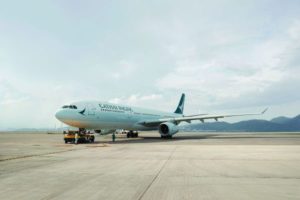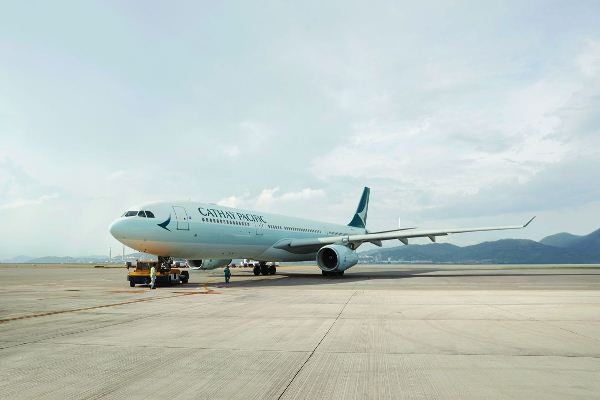 The Cathay Pacific group reported that its net loss more than doubled to HKD1.26 billion (US$160.53 million) in 2017 from a loss of HKD575 million in 2016, marking the Hong Kong flag carrier’s first back-to-back loss in its 71-year history.
The Cathay Pacific group reported that its net loss more than doubled to HKD1.26 billion (US$160.53 million) in 2017 from a loss of HKD575 million in 2016, marking the Hong Kong flag carrier’s first back-to-back loss in its 71-year history.
In March last year, the group, Asia’s largest international airline, posted its first annual loss in eight years.
However, robust earnings from its cargo unit and healthy contribution of profits from subsidiaries and associate businesses helped to offset the airline’s steep losses, the group said in a statement.
Airline losses in the second half of 2017 were lower than those in each of the two preceding half years, which the airline attributed to cost cutting and restructuring.
“Evidence of progress became apparent in the second half of the year,” it said.
It reported a profit of HKD792 million in the second half of 2017, compared to a loss of HKD2.051 billion in the first half of 2017 and a loss of HKD928 million in the second half of 2016.
Sister airlines Cathay Pacific and Cathay Dragon reported a loss of HKD1.538 billion in the second half of 2017, compared to a loss of HKD2.765 billion in the first half of 2017 and a loss of HKD2.580 billion in the second half of 2016.
Cathay said it faced last year the same challenges it did in 2016. “Overcapacity in passenger markets led to intense competition with other airlines and continued pressure on yields on many of our key routes.”
“As the year progressed we began to see positive results from our transformation programme and our business also benefited from a strong cargo business, a weaker US dollar, and improved premium class passenger demand,” it continued.
Passenger revenue in 2017 was HKD66.408 billion, a decrease of 0.8% compared to 2016. Capacity increased by 2.8%, reflecting the introduction of new routes and increased frequencies on other routes.
Yield, which was under pressure for most of the year, fell by 3.3% to 52.3 cents, albeit improving by 3.1% in the second half of the year compared to the first half.
The group’s cargo business benefited from robust demand in 2017, with cargo revenue increasing by 19.1% to HKD23.9 billion. The cargo capacity of Cathay Pacific and Cathay Dragon increased by 3.6%.
Tonnage carried increased by 10.9%. Yield rose by 11.3% to HKD1.77, benefiting from the resumption (from April) of the collection of fuel surcharges in Hong Kong and from strong demand.
In response to the difficult operating environment in 2017, Cathay Pacific embarked in the first half of 2017 on a three-year “corporate transformation program.”
“In 2017, we built the right foundations, strategy and structure. We reorganised our head office, and focused on containing costs and improving efficiencies. We appointed new management and leadership teams. The associated redundancy costs (of HK$224 million) have been recognised in 2017 staff expenses.”
As for its current fleet, the group took delivery of 12 Airbus A350-900 aircraft in 2017, bringing the total number of this aircraft type to 22 at the end of the year.
In September, it ordered 32 Airbus A321-200neo aircraft for Cathay Dragon, to be delivered from 2020, and retired its final four Airbus A340-300 aircraft and two Boeing 747-400 BCF freighter aircraft.
It also wet-leased two Boeing 747-8F freighter aircraft to increase cargo capacity.
Cathay Pacific chairman John Slosar said: “Our priorities for 2018 are our transformation programme, changing the way that we work so as to better contain costs which will strengthen our passenger business further.”
He expressed confidence of a successful outcome from these efforts, as the company looks to benefit from a slowing of the decline in passenger yields as global economic conditions improve.
“The outlook for our cargo business is positive and we will take best advantage of opportunities in the growing global cargo market.”
Slosar said that to improve competitiveness, they are expanding their route network, increasing frequencies on their most popular routes and buying more fuel-efficient aircraft.
“We are acting decisively to make Cathay Pacific and Cathay Dragon better airlines and stronger businesses. We believe we are on track to achieve strong and sustainable long-term performance.”





